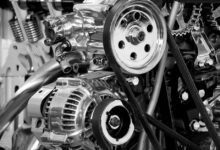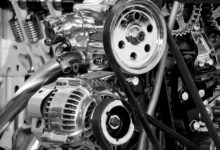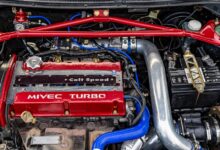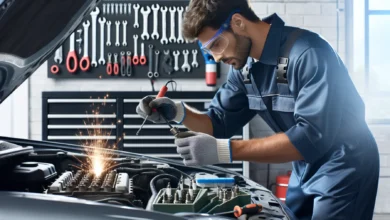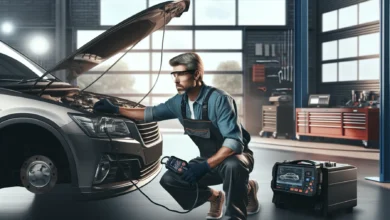The Ultimate Guide to Types of Car Maintenance
Sponsored Ads
Understanding the Importance of Regular Maintenance
Maintaining your vehicle is crucial for ensuring its longevity, reliability, and safety. Regular maintenance helps prevent costly repairs, improves fuel efficiency, and enhances your driving experience. However, with the myriad of maintenance services available, it can be overwhelming to navigate the options. This comprehensive guide will delve into the various types of car maintenance, their benefits, and potential drawbacks, empowering you to make informed decisions about your vehicle’s upkeep.
Preventive Maintenance
Benefits
Preventive maintenance involves proactive measures taken to prevent potential problems and extend the lifespan of your vehicle. It typically includes regular oil changes, tire rotations, and fluid level checks. Adhering to a preventive maintenance schedule can significantly reduce the risk of breakdowns, improve performance, and save you money in the long run.
Drawbacks
While preventive maintenance is generally beneficial, it can involve recurring expenses. However, these costs are often minimal compared to the potential savings from avoiding major repairs. Additionally, some maintenance tasks, such as changing spark plugs or replacing filters, require a certain level of mechanical skill or professional assistance.
Corrective Maintenance
Benefits
Corrective maintenance focuses on repairing or replacing faulty components or systems after they have failed. This type of maintenance is necessary to restore the functionality and safety of your vehicle. Timely corrective maintenance can prevent minor issues from escalating into more serious problems.
Drawbacks
Corrective maintenance can be costly, especially if the repairs involve replacing major components. Additionally, it can lead to unexpected expenses and vehicle downtime while the repairs are being carried out. Regular preventive maintenance can help reduce the need for corrective maintenance and minimize its potential financial impact.
Predictive Maintenance
Benefits
Predictive maintenance utilizes advanced diagnostic tools and monitoring systems to identify potential issues before they manifest as failures. It involves proactively servicing or replacing components based on their predicted failure risk. Predictive maintenance can significantly reduce the likelihood of breakdowns, increase vehicle uptime, and enhance safety.
Drawbacks
Predictive maintenance can be more expensive than preventive or corrective maintenance due to the use of specialized equipment and expert analysis. Additionally, it requires a deep understanding of vehicle systems and the ability to interpret data accurately, which may not be feasible for all vehicle owners.
Condition-Based Maintenance
Benefits
Condition-based maintenance focuses on monitoring the actual condition of vehicle components to determine when maintenance or repairs are necessary. It uses sensors and diagnostic tools to assess the performance and health of different systems, allowing for early detection of potential issues.
Drawbacks
Condition-based maintenance requires a significant investment in sensors, monitoring equipment, and data analysis capabilities. It can also be challenging to set optimal thresholds for determining when maintenance is needed, as these thresholds may vary depending on the vehicle, operating conditions, and driving style.
Reliability-Centered Maintenance
Benefits
Reliability-centered maintenance (RCM) is a proactive approach that aims to optimize system reliability by identifying and mitigating potential failure modes. RCM involves a thorough analysis of vehicle components, systems, and operating conditions to determine the most effective maintenance strategies.
Drawbacks
RCM can be a complex and time-consuming process, requiring extensive expertise and data analysis. It is typically applied to critical systems or high-value assets where the consequences of failure are severe. The implementation costs and ongoing analysis requirements can be substantial.
Table of Types of Car Maintenance
| Type | Benefits | Drawbacks |
|---|---|---|
| Preventive Maintenance | Reduces risk of breakdowns, improves performance, saves money | Recurring expenses, may require mechanical skill |
| Corrective Maintenance | Restores functionality and safety, prevents escalation of issues | Can be costly, leads to unexpected expenses and downtime |
| Predictive Maintenance | Identifies issues before failure, reduces breakdowns, increases uptime | More expensive, requires specialized equipment and expertise |
| Condition-Based Maintenance | Assesses component condition, allows early detection of issues | Requires significant investment in sensors and analysis capabilities |
| Reliability-Centered Maintenance | Optimizes system reliability, reduces potential failures | Complex and time-consuming process, requires extensive expertise and data |
FAQs
When should I get my car serviced?
Refer to your vehicle’s owner’s manual for recommended service intervals based on mileage or time. Regular oil changes are typically recommended every 5,000-7,500 miles. Other services may be needed less frequently.
How much does car maintenance cost?
Maintenance costs vary depending on the type of service, vehicle make and model, and location. Regular preventive maintenance may cost around $100-$300 per visit, while major repairs can exceed $1,000.
Can I do car maintenance myself?
Some basic maintenance tasks, such as changing oil or replacing filters, can be done at home with the right tools and knowledge. However, more complex repairs should be entrusted to qualified mechanics.
What are the signs of deferred maintenance?
Neglected maintenance can manifest in various ways, including decreased fuel efficiency, rough idling, strange noises, or warning lights on the dashboard. Ignoring these signs can lead to more severe issues and costly repairs.
How often should I rotate my tires?
Tire rotations are generally recommended every 5,000-8,000 miles. Regular rotations ensure even wear on all four tires, extending their lifespan and improving handling.
What are the benefits of a car maintenance log?
Keeping a car maintenance log helps you track services performed, identify patterns, and stay organized. This record can be invaluable when selling your vehicle or troubleshooting issues.
Is it worth it to invest in regular car maintenance?
Absolutely! Regular maintenance may seem like an expense, but it actually saves you money in the long run by preventing costly repairs, extending the life of your vehicle, and enhancing your safety and driving experience.
Call to Action
Don’t wait until your car breaks down! Taking proactive measures to maintain your vehicle is the key to ensuring its longevity and peace of mind on the road. Schedule regular maintenance appointments, invest in preventive services, and pay attention to signs of deferred maintenance. By following these tips and understanding the different types of car maintenance, you can keep your vehicle running smoothly and safely for many years to come.
Remember, your car is a valuable asset, and regular maintenance is an investment that will pay dividends in the form of a reliable, safe, and enjoyable driving experience. Stay ahead of potential problems and enjoy the peace of mind that comes with a well-maintained vehicle.
Embrace the power of proactive car maintenance and protect your investment. The future of your vehicle is in your hands!
Disclaimer
While we strive to provide comprehensive information, the details provided in this article may vary depending on specific vehicle makes and models. Always consult your vehicle’s owner’s manual for recommended maintenance intervals and specific service requirements.



